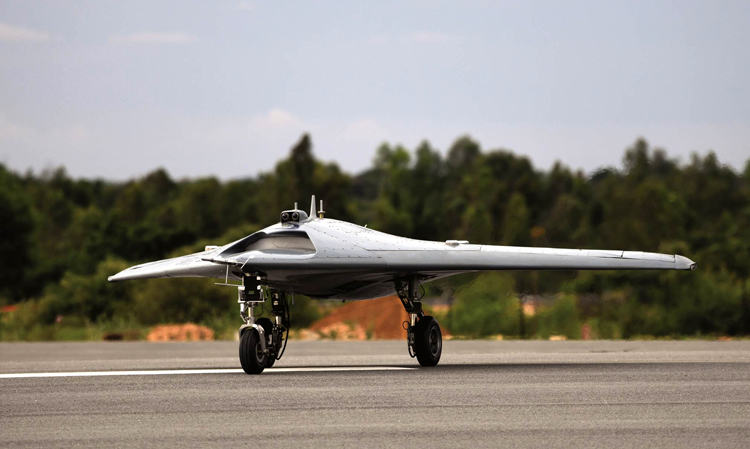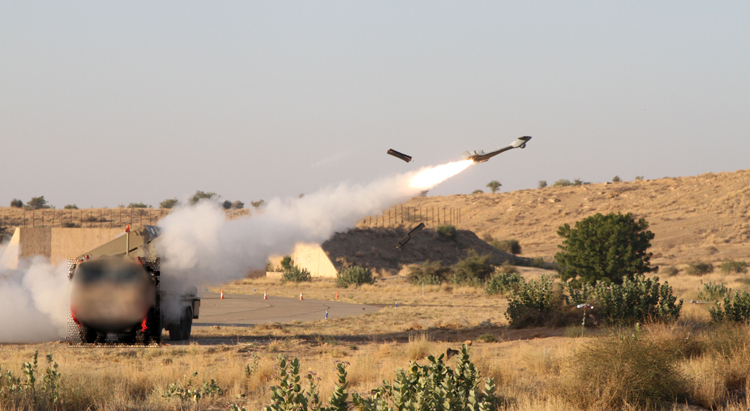INDIAN ARMED FORCES CHIEFS ON OUR RELENTLESS AND FOCUSED PUBLISHING EFFORTS

The insightful articles, inspiring narrations and analytical perspectives presented by the Editorial Team, establish an alluring connect with the reader. My compliments and best wishes to SP Guide Publications.

"Over the past 60 years, the growth of SP Guide Publications has mirrored the rising stature of Indian Navy. Its well-researched and informative magazines on Defence and Aerospace sector have served to shape an educated opinion of our military personnel, policy makers and the public alike. I wish SP's Publication team continued success, fair winds and following seas in all future endeavour!"

Since, its inception in 1964, SP Guide Publications has consistently demonstrated commitment to high-quality journalism in the aerospace and defence sectors, earning a well-deserved reputation as Asia's largest media house in this domain. I wish SP Guide Publications continued success in its pursuit of excellence.
- Operation Sindoor: Resolute yet Restrained
- India’s Operation Sindoor Sends a Clear Message to Terror and the World – ‘ZERO TOLERANCE’
- Japan and India set forth a defence cooperation consultancy framework, talks on tank and jet engines
- Terrorist Attack in Pahalgam in Kashmir: Unfolding a long surgical war against PAK
- Lt General Pratik Sharma takes over Command of Indian Army's Northern Command
Indigenous Stealth Drone
The development of Remotely Piloted Strike Aircraft (RPSA) and its successful induction into the Indian Armed Forces will provide India with considerable air supremacy since the RPSA, with its small size, stealth capabilities and fully automated capabilities will prove to be a game-changer in performing offensive strike and suicide mission as required
 |
The Author is Former Director General of Information Systems and A Special Forces Veteran, Indian Army |

On July 1, 2022, India took the small but significant step with the Defence Research and Development Organisation (DRDO) carrying out a successful maiden flight of the Autonomous Flying Wing Technology Demonstrator – the Stealth Wing Flying Test Bed (SWIFT), also being called ‘Ghatak’, which is a smaller scaled down version of what will eventually be a Remotely Piloted Strike Aircraft (RPSA). The Ghatak was flown from the aeronautical test range at Chitradurga in Karnataka for around 15 minutes.
A press statement issued by the DRDO said, “Operating in a fully autonomous mode, the aircraft exhibited a perfect flight, including take-off, waypoint navigation, and a smooth touchdown. This flight marks a major milestone in terms of proving critical technologies towards the development of future unmanned aircraft and is a significant step towards self-reliance in such strategic defence technologies.” The statement added that the Unmanned Aerial Vehicle is designed and developed by Aeronautical Development Establishment (ADE), Bengaluru, a premier research laboratory. It is powered by a small turbofan engine. The airframe, undercarriage, and entire flight control and avionics systems used for the aircraft were developed indigenously.
This flight marks a major milestone in terms of proving critical technologies towards the development of future unmanned aircraft and is a significant step towards self-reliance in such strategic defence technologies
Defence Minister Rajnath Singh tweeted: “Congratulations to @DRDO_India on successful maiden flight of the Autonomous Flying Wing Technology Demonstrator from Chitradurga ATR. It is a major achievement towards autonomous aircraft which will pave the way for Atmanirbhar Bharat in terms of critical military systems.”
Congratulations to @DRDO_India on successful maiden flight of the Autonomous Flying Wing Technology Demonstrator from Chitradurga ATR.
— Rajnath Singh (@rajnathsingh) July 1, 2022
It is a major achievement towards autonomous aircrafts which will pave the way for Aatmanirbhar Bharat in terms of critical military systems. pic.twitter.com/pQ4wAhA2ax
Dr G. Satheesh Reddy, Secretary, Department of Defence R&D and Chairman of DRDO appreciated the efforts of the teams associated with the design, development, and testing of the system. The wingspan of Ghatak reportedly is five metres long and its length is four metres long. The overall weight of the unmanned combat vehicle (UCV) is expected to be 1,050 kg. With the command range of 200 km it can achieve an altitude of 6,000 metres, providing a flight endurance of one hour.
Though the airframe, undercarriage, entire fire control and avionics systems of the Ghatak have been developed indigenously, it is currently powered by a small ‘Russian’ turbofan engine. The Ghatak’s flight validated the flying control laws, navigation and other technical requirements needed to build the much bigger RPSA.
Though the airframe, undercarriage, entire fire control and avionics systems of the Ghatak have been developed indigenously, it is currently powered by a small ‘Russian’ turbofan engine
The Indian Armed Forces have a large number of unmanned aerial vehicles (UAVs), mainly of Israel-origin, for real-time reconnaissance and precision targeting. The IAF also has Israeli Harop ’killer’ or Kamikaze drones that destroy enemy targets and radars by exploding on them like a missile strike. Under Project ‘Cheetah’ costing 3,500 crore, half of the 80-90 Israeli Heron UAVs inducted by the Armed Forces over the years with laser-guided bombs and air-to-ground missiles and advanced reconnaisance capabilities are being ugraded.

But the RPSA will not happen overnight. The DRDO will need to undertake many more trials. These will be followed by the Cabinet Committee on Security (CCS) approving the development of the RPSA and allotting necessary funds. Thereafter, Defence Acquisition Council headed by the Defence Minister would accord the acceptance of necessity (AoN), followed by development, trials and induction into the Armed Forces requiring huge numbers and costs. All this could take a number of years.
Hopefully, we will be able to shorten the time-frame beyond the Ghatak maiden flight to the development and eventual induction of the RPSA into the Indian Armed Forces, filling the void of an indigenous UCAV
As per plans, the RPSA will be fully indigenous, powered by the indigenous Kaveri aero-engine which does not require an afterburner, reinforcing the stealth capability. Hopefully, we will be able to shorten the time-frame beyond the Ghatak maiden flight to the development and eventual induction of the RPSA into the Indian Armed Forces, filling the void of an indigenous UCAV.
UCAV’s came into prominence during the Azerbaijan-Armenia conflict over Ngorno-Karabakh; with Azerbaijan dominating the battle using Turkish UCAVs. Armed drones have been used by terrorist organisations also. The ongoing conflict in Ukraine is witnessing extensive use of a variety of drones. International aerial warfare trends all appear to incorporate increasingly complex UAV and UCAV systems. We must also take note of the high-end UAVs and stealth UCAVs in China’s People’s Liberation Army (PLA), some of which are of fleet size.





